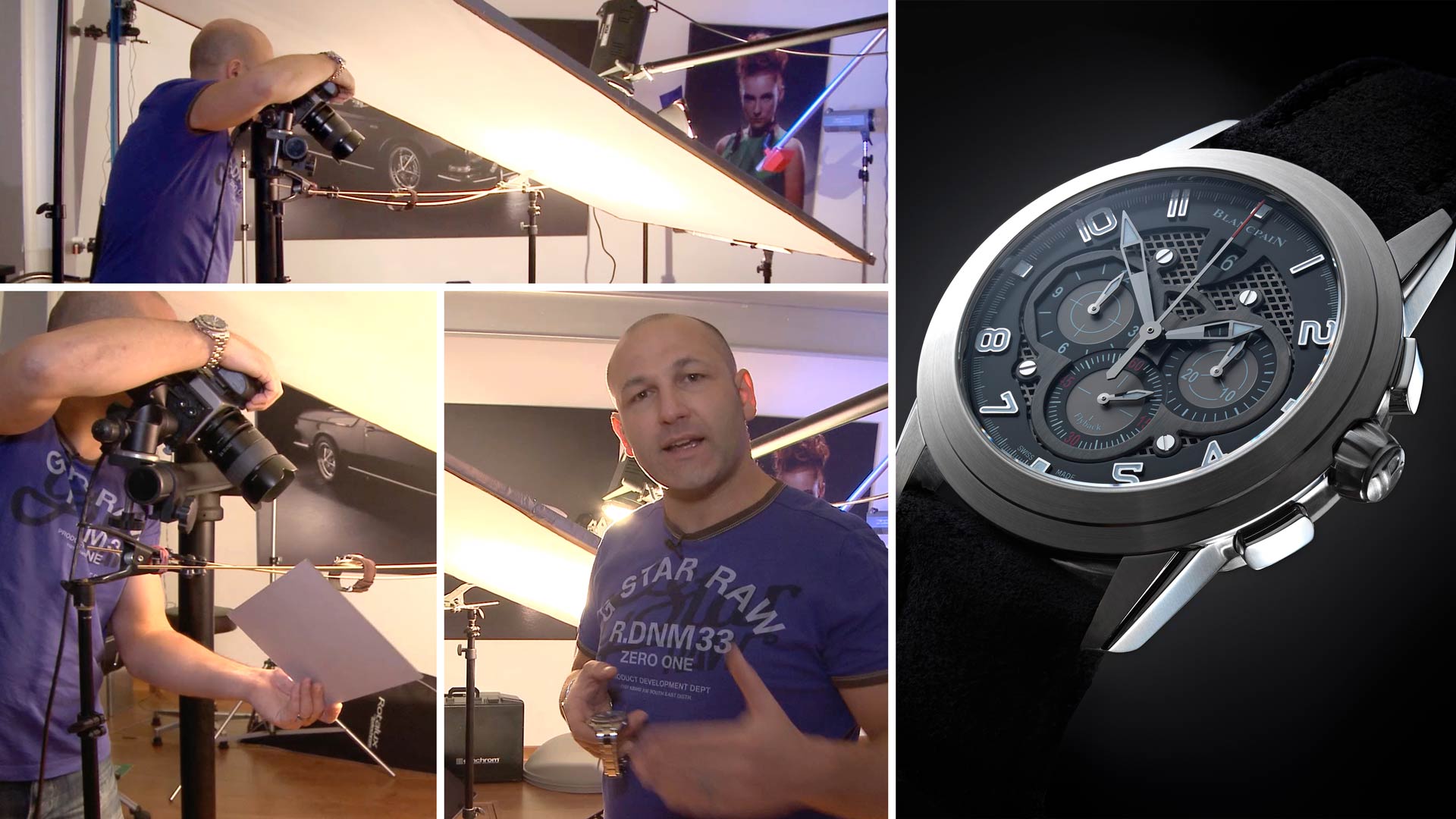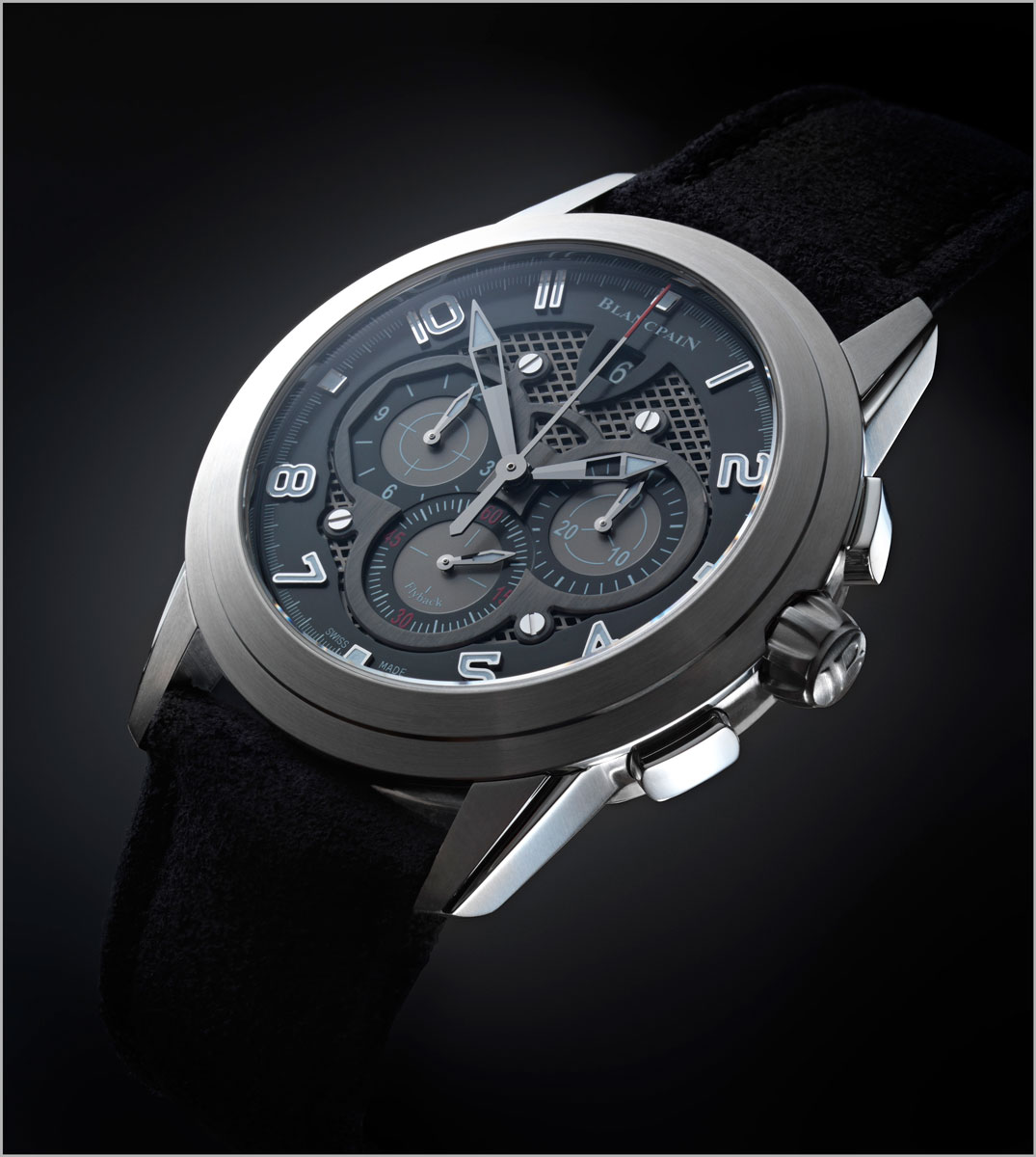Luxury Watch Photography Using One Studio Light
When a client asks you to photograph a $15,000 luxury watch, you’d better know how to make it look good.
Karl only used one light to capture this exquisite image, so everything was lit perfectly and captured in one shot. In this watch photography tutorial, he shows you exactly how you can replicate this luxurious, high-quality look in your own product photoshoots.
This photoshoot demonstrates that when you have the right photography knowledge and training, you can achieve flawless, high-end results even with just one light.
In this class:
- Product photography using one light
- How to photograph watches
- Lens choice for product photography
- How to create and control gradient light and lighting falloff
- Depth of field considerations and using focus stacking for maximum depth of field
When photographing detailed products like this Blancpain watch, there is always an element of post-production required. You can see this process in our Luxury Watch Retouching class.
To learn more about how to photograph watches, take a look at Luxury Watch Shoot 2 and Luxury Watch Product Photography (LIVE).
If you have any questions about this class, please post them in the comments section below.



Comments
Hi Karl, what blue card is that can you tell me its full name or brand details etc. want to buy it but I am unable to find it in market.
thanks in advance.
Hi, what do you mean ‘blue card’? What time in this video please?
that part is between 14.27 to 14.47
Hi, I don’t know the brand but this is the same thing: https://www.amazon.co.uk/A4-Coloured-Mirror-Card-Metallic/dp/B00G5FG9UY it’s usually available from art supply shops and is called metallic foil card.
Thanks Karl
Hi Karl,
Since you were using focus stacking does the Hasselblad have an auto focus stacking feature? I believe the Nikon D850 has it and was wondering if the Hassie has this why this was not used or do you recommend staying away from the auto feature and do it manually?
Thanks
Hi jlmiller, it does have that feature now but it didn’t have it when I shot this class. Although to be honest I haven’t tried it yet as I’m used to doing it manually!
Just a question about the choice of bare bulb. Tiny object, comparatively large light source. Now you set out I believe, to do a one light example for this tutorial, and you chose a regular light (a somewhat universal size). If you had your choice, would you have used a picolight bare bulb to aid in shrinking the light source comparative size? Or would it not have mattered that much and your preference would be as shown in the video?
Hi Gary, no not at all as the light was put through a scrim which greatly increases its size and then gives me a radial gradient. The choice of a barebulb of this shape is that it gives a slightly better radial gradient than a flat facing light (not much but a bit better I find).
Hi Karl,
Great tutorial, thank you for showing us what can be done with just one light, fantastic.
In case we do not have access to a Lee filter roll, do you think that it would be possible to achieve great results using the diffusor part of a 150-200cm 5 in 1 reflector? Thank you and keep up the great work, cheers.
Hi, fabric diffusers I find can give a starburst pattern due to the mesh weave of the material. If you can’t get Lee diff, then try and source architectural drawing/tracing paper.
Your fast response is highly appreciated. I am convinced by your explanation, I just ordered a roll fro Lee filters.
Thanks Karl for the great course, with this tutorial I made a reconstruction of an old watch I inherited from my late uncle:
Before post production: https://i.imgur.com/exvK1f1.jpg
After post production: https://i.imgur.com/UtEYPCw.jpg
Any thoughts? Thanks again for your thorough explanations.
Hi Tom, good result but I can’t critique individual posts I’m afraid as we’d end up doing hundreds of them each week! Please submit it in our next product or appropriate critique show and I’ll do it then.
Totally understand, appreciate it!
Super hard getting that gradient ball of light. hehehe
Hi Karl,
two questions:
1. You have mentioned on other product tutorials that the size of the scrim should be in proportion to the object shot. If working in a tight space and if shooting jewelry, what is the minimum scrim size you recommend, 18inch x 18inch?
2. Which is better to fill in the darker areas, a white foam board or a silver reflector?
thanks
amit
Hi Amit.
1. Remember that the softness of the light is always related to the size of the light source from the subjects perspective so 18×18 will only be effective if it is very close to the jewellery. It simply comes down to the angles of incidence of light to the subject which you can work out by putting your eye where the subject is and observing where the light will be coming from.
2. This question is not logical. The most effective reflector is the one that provides the correct level of illumination that you require in the shadow area. A silver reflector will reflect more light but it may be more specular (but it depends what it is reflecting). A white reflector will reflect less light but it will be more diffused.
Please try to apply the simple physics. If you follow the physics all of the answers are there.
Hi Karl,
Thanks for the great tutorial ! I am totally new here but I’ve been following your work for years now and I have to thank you for the knowledge you bring here.
I see that you use a lot of those mirror card reflectors (silver and gold) on your product photography but I can’t find any on the internet. Do you have a website to advise ? Keep in mind that I am living in Paris (France) so international or european delivery would be great !
Thanks again. Cheers
Hi Jerome, acrylic mirrors can be purchased through companies that makes signs and name plates for businesses. Silver and gold card be purchased from any art supply store. Cheers Karl.
Hi Karl,
thanks it’s brilliant tutorial as always.
was not better to more separating watch strap from background by local lighting? and also is it acceptable to change the lighting to achieve maybe better image from logo brand on main button (right side of watch)?
thanks in advanced for your time.
Hi yes all of those things are possible but we wanted to show what was possible with just one light.
Great Stuff Karl, as always!
When I try to photograph watches I often find that I struggle quite a bit with the light reflection on the glass of the watch.
Usually watches are photographed at 10.08hrs, but I’ve seen your shot of the Omega and that one too is set at 1.52 hrs – why is that?
Great choice of music in this video btw!
Hi, no reason both time settings are suitable, occasionally they have to differ with chronographs or watches with things in unusual places. Yes the light on the glass can be a problem, you either have to polarise it or move the light.
Hi Karl,
I need your advice. I am a beginner with product photography which I love so much….I am trying to buy a light for my home studio what do you think about the Godox SK 400 for product, food and portraits. thank you
Hi Tobi, I’m afraid I’ve never used the Godox lights but I’ve heard positive reviews about them.
Hi Karl,
I have two questions on the focus stack of this specific shot. To optimize the frames, do you think it’s better if I go along the diagonal of the product taking points equispaced from bottom left to top right? (the watch is drawing a diagonal in this way). Furthermore, I think the best option for me to focus properly is in Manual Mode using Live View and magnifying (I use a Nikon D800).. Let me know if you agree.
Thanks
Enrico
Hi Enrico, unless you are shooting with a tilt and shift lens then your plane of focus will always be parallel with the sensor. On that basis it doesn’t really matter as long as you focus on the part of the subject that is closest to the plane of focus closest to the sensor and then keep working slightly further away making sure that the DOF was sufficient enough to cover each transition. In practise though I focus on the closest part of the subject and then look and manually focus slightly further in and in and over again until I reach the furthest point, whether you do this on a diagonal is irrelevant as long as you start at the closest point of the subject and finish on the furthest point of the subject from the sensor.
Hi Karl,
great tutorial, as always. I have a practical question. Are you using two rods to hold the watch instead of a watch holder (as those you can see in watch shops) because it’s easier to use reflectors and other accessories?
Enrico
Hi Enrico, in this one I used two rods, as you will see on our live watch shoot (head to Live Shows section) I used a watch holder, sometimes I’ve also made my own watch holder by bending a peice of metal to suit.
Thanks Karl, I will try for an entry level model do you recommend any
35mm ff models to get ?
Hey Karl loved the videos I’ve learned so much I’ve built a mini studio from your videos and recently I’ve been buying and selling Luxury watches on eBay as a side hobby and I was wondering I don’t have a camera do you think all these pictures can be done on my iPhone XS Max camera and if so what apps and or lenses do you recommend or if not what’s a good entry level camera I can start with and any other suggestions would much appreciate.
Thank you Kyle!
Hi Kyle, I suppose it is possible on a phone camera if you have your lighting right but you may get some lens distortion. You might be better looking at an entry level 35mm FF camera and an 80mm lens with an extension tube.